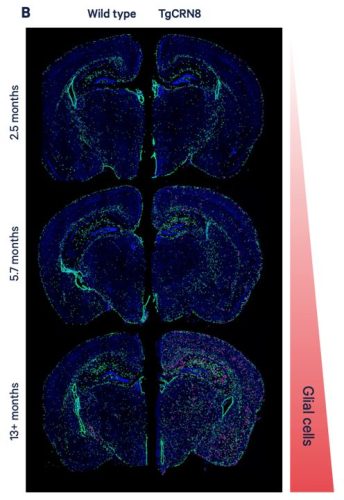What single cells are revealing about brain disorders
Posted: 11 July 2025 | Drug Target Review | No comments yet
Single-cell and spatial technologies are giving researchers an unprecedented view of how brain diseases like Alzheimer’s really work. The result? Faster discovery, clearer targets and a new path towards more effective treatments.


Neurological diseases are among the most complex and least understood conditions in medicine. Despite the knowledge that certain genes increase the risk of contracting diseases like Alzheimer’s and Parkinson’s, it is still not fully understood how those diseases develop in the brain. But that is beginning to change.
At the centre of this shift is 10x Genomics – a company building tools that enable researchers to study individual cells and their gene activity, both in isolation and in their original spatial context. These technologies are now being used in labs around the world to explore how the brain functions – and what changes occur when it begins to break down.
Michael Schnall-Levin, Chief Technology Officer and founding scientist at 10x Genomics, has seen this transformation up close. “Our mission as a company is to build the most impactful technologies that allow researchers and drug developers to understand underlying biology and ultimately use that to impact human health,” he says.
Automation now plays a central role in discovery. From self-driving laboratories to real-time bioprocessing
This report explores how data-driven systems improve reproducibility, speed decisions and make scale achievable across research and development.
Inside the report:
- Advance discovery through miniaturised, high-throughput and animal-free systems
- Integrate AI, robotics and analytics to speed decision-making
- Streamline cell therapy and bioprocess QC for scale and compliance
- And more!
This report unlocks perspectives that show how automation is changing the scale and quality of discovery. The result is faster insight, stronger data and better science – access your free copy today
It matters because it is helping scientists identify new therapeutic targets, track disease progression at the cellular level and test how experimental drugs affect specific brain cell types.
From maths and physics to molecular biology
Schnall-Levin did not begin in the life sciences. “I did physics and math as an undergraduate,” he explains. But during his PhD in applied mathematics, his focus began to shift. “I started looking around and getting interested in biology. I got my eyes opened to molecular biology, bioinformatics, computational biology and these emerging fields at the time.”
That turning point led to a postdoctoral position at the Broad Institute with Dr Eric Lander, Founding Director of the Broad Institute of MIT and Harvard. Schnall-Levin also took on an early role at Foundation Medicine – one of the first cancer genomics companies. “I took a couple of other software startup opportunities,” he adds, “but I realised I missed the genomics and science. That’s when I joined 10x.”
What 10x has built
10x’s platforms – Chromium, Visium and Xenium – are all designed to study biology at cellular resolution, but each does so in a different way.
Chromium enables single-cell analysis, allowing researchers to profile gene expression or chromatin accessibility in thousands of individual cells from a tissue sample. Visium adds spatial context by mapping gene activity across a tissue section, showing where different cell types are located and how they interact. Xenium takes this further with in situ analysis at subcellular resolution, detecting RNA and protein molecules directly within tissues using high-resolution imaging. Together, these tools give researchers a detailed view of how cells behave, where they are and how they contribute to health or disease.
There are known genetic mutations that are linked to a higher risk of developing Alzheimer’s or to a worse prognosis.
“There are known genetic mutations that are linked to a higher risk of developing Alzheimer’s or to a worse prognosis,” Schnall-Levin explains. “But with our technologies, what you can do is take people who have those different genetics and look at their cells – either spatially or individually – and understand what is actually happening in some of those patients at the molecular level.”
In neurological disease research, this level of analysis matters. “Even when people talk about glial cells – you might just say, OK, they’re glial cells – but there are actually many different subtypes, and those subtypes can be doing different things in people who are healthy compared to those with a disease.” Schnall-Levin continues, “what our technologies allow you to do in situations like this is really understand at the most fundamental level what’s actually happening and how that’s going to drive disease.”
This kind of insight is what moves research beyond correlation. It helps scientists pinpoint what is actually causing disease – and more importantly, how to stop it.


Xenium analysis of wild-type (WT) and TgCRND8 mice across multiple time points reveals age-associated enrichment of activated glial populations. Green: disease-associated astrocytes; pink: disease-associated microglia. Image courtesy of 10x Genomics.
A growing body of evidence
“We just passed 10,000 publications in total that have used our technology in some way or another,” Schnall-Levin says. This is a major milestone and signals how quickly the field is evolving.
“Some of these 10x technologies have only been released in the last five years or even the last couple of years,” he adds. “It just shows how impactful they are.”
The applications are wide-ranging, but the momentum in neurological research is particularly notable. Researchers are using 10x platforms to identify molecular targets, understand disease heterogeneity and, in some cases, explore how different cell populations respond to drugs in preclinical models.
How AI fits in
Artificial intelligence (AI) is also beginning to play a larger role across 10x’s product portfolio. “The first area where we have done this in the most substantial way is in our spatial technology platform,” says Schnall-Levin.
When a customer uses those platforms, they use these AI tools to automatically annotate the entire image and identify where all the cells are.
One example is cell segmentation – identifying individual cells in tissue images. 10x has trained AI models on manually annotated datasets to automate this process in its software. “When a customer uses those platforms, they use these AI tools to automatically annotate the entire image and identify where all the cells are.”
The company is also integrating AI to make data analysis more accessible and less time-consuming. “We’re starting to look at building AI into our products to help researchers analyse their data and automate that process, to quickly incorporate information from the entire literature or pull together different analysis tools,” Schnall-Levin explains. And larger ventures are also under way: “There have been quite a few efforts now – like the Billion Cells Project with the Chan Zuckerberg Initiative (CZI) , and the Arc Institute just announced the Virtual Cell Atlas which is using our technology – where the goal is to build AI on top of those datasets.”
The Billion Cells Project refers to a global initiative aiming to map gene expression across one billion individual cells, creating reference datasets to advance AI-driven insights into health and disease. Separately, the Arc Institute – a nonprofit research organisation focused on accelerating scientific progress and understanding the root causes of complex diseases – is using 10x platforms to generate large-scale perturbational single-cell datasets designed to support the development of predictive “virtual cell” models. The goal is to deepen their understanding of health and disease and accelerate therapeutic discovery.
In practice, this means that researchers could soon move from raw data to actionable biological insights in a fraction of the time. Instead of manually stitching together datasets, literature references and custom pipelines, scientists could rely on trained AI models to flag meaningful patterns, suggest targets or even predict responses – potentially accelerating early-stage discovery and reducing bottlenecks in the drug development process.
From discovery to therapy
Schnall-Levin believes the industry is edging closer to real-world therapies that will be directly traceable to single-cell and spatial analysis.
“I think some of the breakthroughs that we’re really excited about are from people who are starting to tease apart the underlying molecular mechanisms of diseases like Alzheimer’s and Parkinson’s… and these are now really suggesting better ways to treat these diseases and develop new drug candidates.”
For 10x, the next major milestone will not be about tools – it will be about outcomes. “A really exciting milestone that I would expect to see – and would be really excited to see – would be new therapies coming out for some of these neurological diseases that trace directly back to an understanding that was driven from the single-cell or spatial.”
What comes next
10x will continue to develop and expand its product platforms while supporting researchers with images, datasets and visualisations to make their findings more interpretable and reproducible.
“Sometimes I think just seeing the latest images from our data – it really hits you how powerful it is,” Schnall-Levin says.
The combination of high-resolution tools, large-scale data and AI is shaping the future of neurological disease research. The hope is that, within the next few years, the first wave of therapies to emerge from this work will start to make their way into the clinic.
Publications using these technologies:
- Spatial Transcriptomics and In Situ Sequencing to Study Alzheimer’s Disease
- A TREM2-activating antibody with a blood–brain barrier transport vehicle enhances microglial metabolism in Alzheimer’s disease models


Michael Schnall-Levin has been at the company since its inception and today serves as Chief Technology Officer. Before joining 10x Genomics, Michael was a NSF postdoctoral fellow with Eric Lander at the Broad Institute, where he worked on developing novel applications of DNA sequencing technologies. Prior to that, Michael worked at Foundation Medicine, where he developed some of the early algorithms to accurately detect mutations in patient tumour samples. Michael earned his PhD in Mathematics from MIT with Bonnie Berger, where he was both a Hertz fellow and NDSEG fellow, and his B.A. in Physics from Harvard College.
Related topics
Analysis, Artificial Intelligence, Assays, Bioinformatics, Computational techniques, Disease Research, Drug Discovery, Drug Discovery Processes, Genetic Analysis, Genomics, Imaging, Machine learning, microglial cells, Molecular Biology, Neurons, Neurosciences, Next-Generation Sequencing (NGS), Precision Medicine, Sequencing
Related conditions
Alzheimer’s disease, Neurological diseases, Parkinson's disease
Related organisations
10X Genomics








